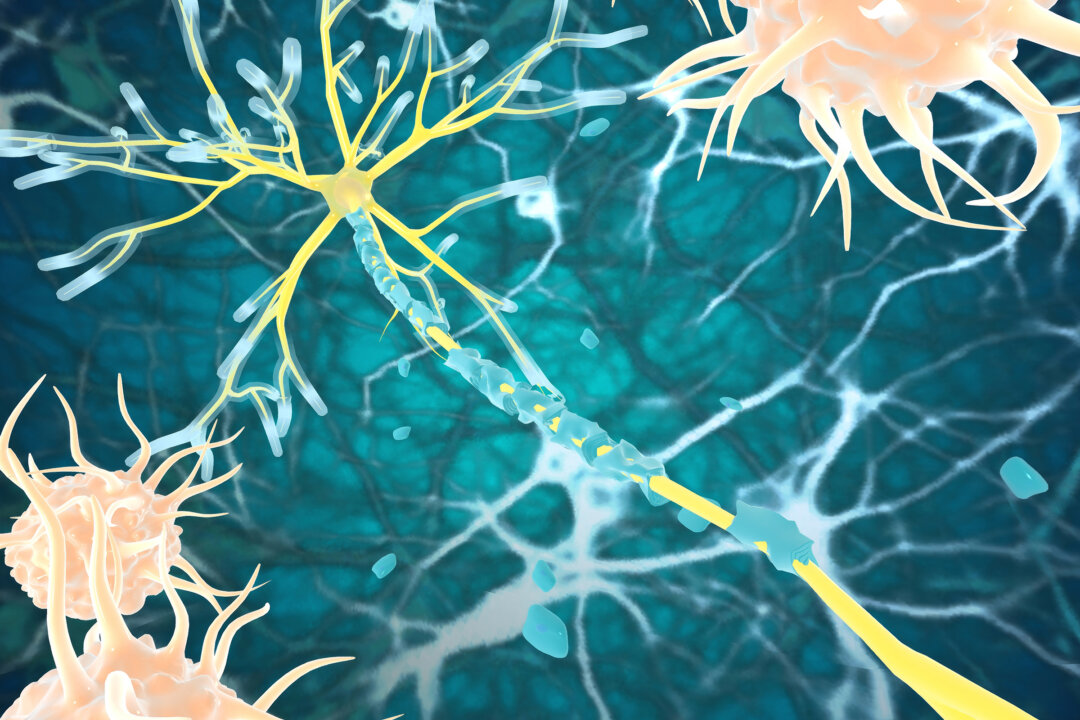Demyelination, which occurs when nerves lose their protective fatty coating, is the cause of several severe and incurable neurodegenerative diseases. Using patterned light and sound paced at 40 Hz, mice were induced to produce gamma brain waves, Li-Huei Tsai, Picower Professor at The Picower Institute for Learning and Memory and the Department of Brain and Cognitive Sciences at MIT, told The Epoch Times. “The neurons in the animals respond at that exact frequency and generate brain waves at that frequency.
” Myelin, which forms part of the “white matter” of the brain, is the fatty coating that wraps around and protects nerves. It promotes faster communication between nerves, and loss of myelin can cause incurable diseases like multiple sclerosis and neuromyelitis optica. “Gamma stimulation promotes a healthy environment,” said Daniela Amorim, a leading researcher at the MIT lab where the study trials were performed.

Myelin can deteriorate as a result of many factors, including trauma, autoimmunity, and genetics linked to neurodegenerative diseases such as multiple sclerosis. Gamma waves ranging from 30 to 80Hz are brain waves with the highest frequency. It is associated with functions such as concentration, intelligence, and memory.
They are mainly active during periods of consciousness and alertness. Two groups of male mice were selected for the study. One group was fed cuprizone, a chemotherapy drug known to break down myelin, and experienced demyelination after three weeks.
The other group was fed a normal diet and remained normal. Some of the mice that were fed cuprizone were then given gamma stimulation at 40Hz while others were not. After six weeks elapsed, mice that weren’t fed cuprizone had healthy brains, as expected.
Mice that were fed cuprizone and didn’t receive 40Hz gamma sensory stimulation showed drastic levels of myelin loss. Cuprizone-fed mice that received 40Hz stimulation retained significantly more myelin, rivaling the health of mice never fed cuprizone by some, but not all, measures. Mice that did not receive gamma stimulation had fewer cells that produced myelin and also had a deficit in a type of protein that suggested reduced nerve connections.
Mice given gamma stimulation had their myelin-producing cell numbers returned to levels reflective of good health and did not have significant loss of nerve connections. Nerve connection is linked with preservation of myelin, the researchers say in their study. Astrocytes and microglia, which are considered to be the brain’s immune cells, became very inflammatory in mice only given cuprizone.
However, these cells had a significantly reduced response in mice given gamma stimulation. Tsai, who has been working on research involving gamma stimulation and disease for several years, told The Epoch Times that her team’s prior research has shown that enhanced gamma waves protect against neurodegeneration, prevent the loss of nerve connections, retain brain volume, reduce neuroinflammation, and ameliorate cognitive effects. The researchers said that previous research primarily focused on direct protection of the nerve cells, rather than the myelin sheath.
“We show that gamma waves are also very protective against demyelination and white matter inflammation.” said Tsai. “This study shows that it’s not just the gray matter, but also the white matter that’s protected by this method.
” White matter refers to parts of the nervous system made up of many axons covered with myelin, which has a light appearance and functions to insulate and speed up nerves’ communication. Gray matter has fewer myelinated axons and more cell bodies..



















